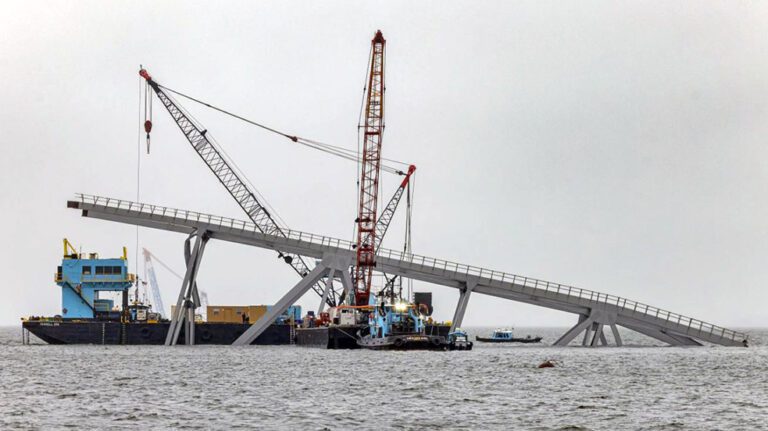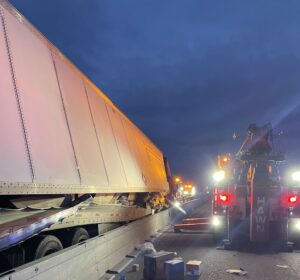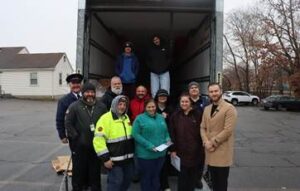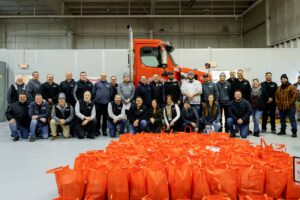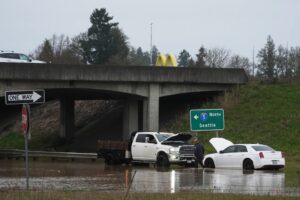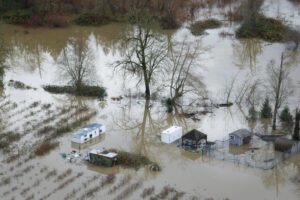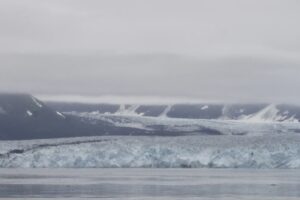BALTIMORE — The only maritime shipping terminal currently operating in the Port of Baltimore is preparing to process an influx of ships as crews continue clearing the mangled wreckage of the collapsed Francis Scott Key Bridge.
Tradepoint Atlantic will unload and process an estimated 10,000 vehicles over the next 15 days, according to a company statement. That includes six regularly scheduled ships and nine others redirected as access to the port’s main terminals remains blocked, posing a logistical nightmare for shipping along the East Coast.
Crews opened a second temporary channel through the collapse site Tuesday, but it’s too shallow for most commercial vessels. The two alternate channels are meant primarily to aid in the cleanup effort. Work continues to open a third channel that will allow larger vessels to pass through the bottleneck and restore more commercial activity, officials said.
Meanwhile, bad weather has hindered salvage operations in recent days. The Patapsco River is also very murky, severely limiting the visibility of divers.
U.S. Sen. Ben Cardin, a Democrat who accompanied Moore in meetings with potential loan applicants, said he spoke with truck drivers who relied on the port to supply their cargo. They are among those feeling the immediate economic effects of the collapse, he said, but the ripple effects will be widespread — especially for small businesses, which he called “the growth engine of our nation.”
Authorities believe six of the workers plunged to their deaths in the collapse, including two whose bodies were recovered last week. Two others survived. The ship remains stationary, its 21 crew members still aboard.
Viewed close up from the deck of a Coast Guard boat, the scope of the catastrophe emerged through heavy fog Wednesday afternoon: Massive steel bridge girders were twisted like ribbons while crushed metal shipping containers dangled perilously from the stalled cargo ship. Fallen street lights that once lined the bridge jutted like toothpicks from the water’s surface.
The sheer volume of debris dwarfed even the cranes and barges involved in the cleanup. And that’s only the view from above; officials said underwater conditions are significantly more challenging.
Divers are still trying to get a sense of the tangled, muddy web. Sonar is being used to map the wreckage on the river bottom in 50 feet of water. A large floating crane nicknamed “Chessy” is helping with the salvage.
Crews will soon begin lifting undamaged containers off the ship before removing the chunks of steel and concrete embedded in its bow, U.S. Coast Guard Rear Admiral Shannon Gilreath said at a news conference.
The Maryland Senate voted unanimously 47-0 to pass a bill Wednesday night to authorize the governor to use the state’s rainy day fund to help port employees who are out of work and aren’t covered under unemployment insurance while the port is closed or partially closed. That sends the bill to the Maryland House, which could approve the bill this week to send it to Gov. Wes Moore.
The legislation also would let the governor use state reserves to help some small businesses avoid layoffs and encourage companies that relocate elsewhere to return to Baltimore once the port reopens.
President Joe Biden is expected to visit the collapse site Friday.
Other vessels are also stuck in Baltimore’s harbor until shipping traffic can resume through the port, which is one of the largest on the East Coast and a symbol of the city’s maritime culture. It handles more cars and farm equipment than any other U.S. port.
The Associated Press is an independent global news organization dedicated to factual reporting. Founded in 1846, AP today remains the most trusted source of fast, accurate, unbiased news in all formats and the essential provider of the technology and services vital to the news business. The Trucker Media Group is subscriber of The Associated Press has been granted the license to use this content on TheTrucker.com and The Trucker newspaper in accordance with its Content License Agreement with The Associated Press.








